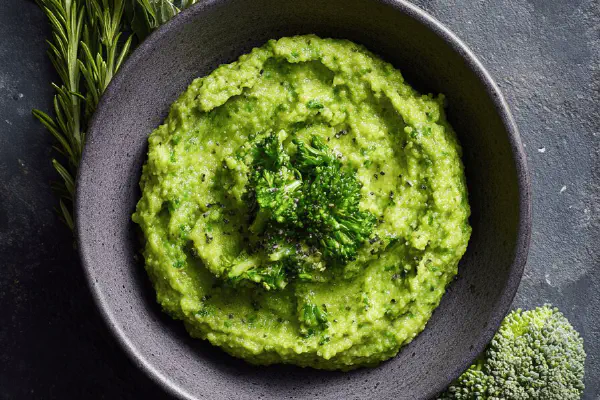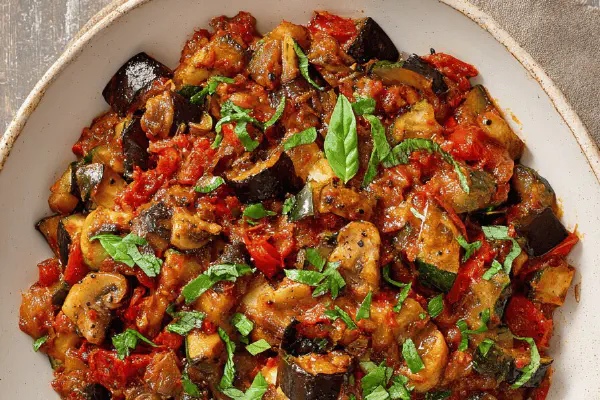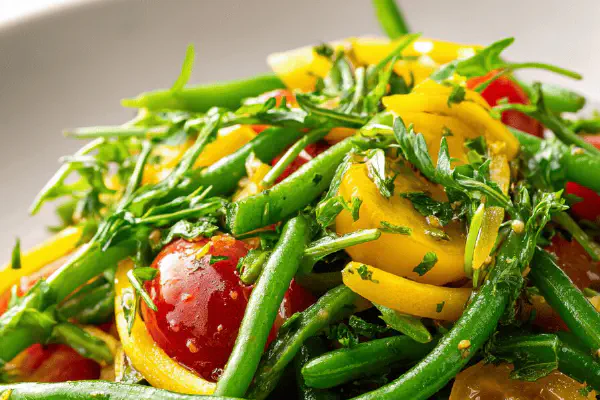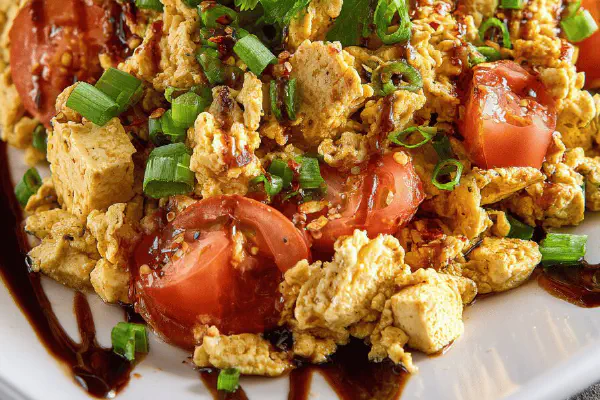Glutinous Rice Mochi Ice Cream
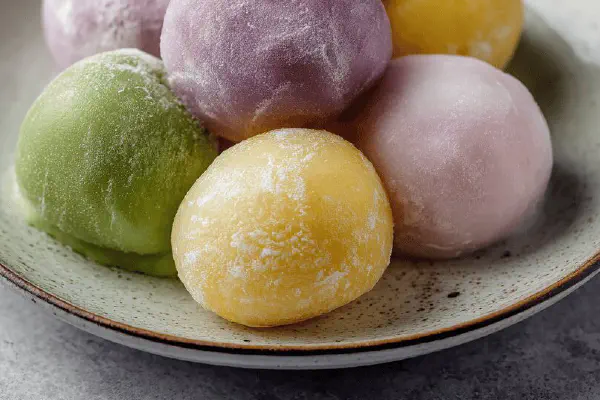
By Emma
Certified Culinary Professional
Ingredients
- 380 ml (1 2/3 cups) coconut milk ice cream or fruit sorbet - adds tropical twist
- 240 ml (1 cup) cold water
- 158 g (1 cup) glutinous rice flour - slight reduction for texture
- 75 g (5 tbsp) granulated sugar - cut down just a bit
- 65 g (1/3 cup) potato starch
About the ingredients
Method
- Freeze metal baking sheet for 20 minutes to get rock-cold surface - key for working mochi
- Scoop 12 rounded balls out of coconut milk ice cream using 30 ml scoop - quick rolling keeps shapes tight. Put back in freezer minimum 65 minutes until rock solid
- In microwave-safe bowl, whisk cold water sugar and glutinous rice flour until fully mixed. No lumps; think smooth batter
- Cover bowl tightly with tightly stretched plastic wrap - traps steam effectively
- Cook in microwave 1-minute bursts stirring thoroughly between each session. Total 4 minutes usually - mixture should turn thick, shiny, translucent, no graininess left - that gummy sheen is your green light
- Dump mixture on heavily potato starch layered board - space is key so dough doesn’t stick
- Dust top of dough generously with remaining starch. Roll dough with a rolling pin into roughly 31 x 24 cm rectangle - aim for uniform, thin layer. Pieces about 7.75 cm squares when cut
- Let dough cool at room temp for about 65 minutes covered loosely with plastic to prevent drying but allow slight skin to form
- Freeze 12-cup muffin tin - space saver and keeps mochi balls intact
- Brush off excess starch from dough surface before cutting
- Cut dough into 12 squares. Work one at a time: place frozen ice cream ball on each square, fold dough over rapidly. Press edges firmly, expelling air pockets and pinching excess dough edges away. No air means no cracks later; pinch well
- Wrap each mochi ball snugly in a 15 cm square of plastic wrap, twist ends tight - locks shape and prevents frost
- Place each wrapped mochi snugly in cold muffin tin cavities, back in freezer for at least 3 full hours for firmness
- Before eating, pull out mochi 4-6 minutes to soften slightly. Never skip this or dough will tear and ice cream will be rock hard
Cooking tips
Chef's notes
- 💡 Chill metal baking sheet solid cold before rolling dough - cold surface stops sticking, dough stays workable instead of gooey mess. Starch dusting critical; too little means tearing, too much messes with dough texture. Roll dough evenly around 3mm thick; too thick chews heavy, thin breaks during folding. Watch microwave time in 1-minute bursts. Stir in between - lumps ruin chew, grainy feel tells you to go longer. Dough goes shiny and translucent - key visual cue for done not overcooked. Let cool covered or skin forms prematurely, cracking later. Cool about an hour is sweet spot, skin delicate but pliable.
- 💡 Ice cream firm and frozen solid before wrapping or mochi gets soggy and shape lost. Use small scoop to keep balls uniform. Work fast folding dough over ice cream - warm hands melt it quick, stiff dough cracks. Seal edges firmly squeezing out air pockets. Air makes cracks, spots that tear when cold. Muffin tin frozen too - holds shape snugly when wrapped balls go back in freezer for final freeze. Minimum 3 hours or mochi is floppy, chewy mess. Take out several minutes before eating; dough softens, ice cream stays cold, no tears when biting.
- 💡 Potato starch preferred for dusting to keep dough from sticking; tapioca starch or cornstarch can substitute in pinch but texture changes. Cornstarch flakes, less stretchy; tapioca makes things gummy if overused. Use glutinous rice flour only for chewy melt - others like tapioca or regular rice flour are wrong; end up stiff or brittle. Water ratio slightly bumped so slurry not too thin or thick. Thin slurry cools fragile, thick squishy. Adjust water based on local flour moisture. Sugar amount controls sweetness and dough texture - too much makes mochi sticky, less lets it form clean skin around ice cream. Experiment with microwave wattage and timing first few tries.
- 💡 Plastic wrap crucial for steaming dough in microwave - traps steam but tight cover prevents water drip ruining texture. Wrap mochi balls in plastic wrap tight after folding; twist ends to lock shape, avoid freezer burn and frost. Keep stuffing starch handy to dust hands and work surface constantly. Rolling pin rolls starch into dough surface, stops sticks, prevents tears. Cutting dough squares when dough cooled but still flexible - cold dough cracks, warm dough sticks. Patience and timing on cooling makes whole process manageable instead of frustrating.
- 💡 Final texture balance is cold firm ice cream inside gentle resilient mochi layer. Freeze muffin pan well ahead to avoid melting. After freeze, mochi can last freezer weeks but freshness affected by ice cream quality. When reheating portion for eating, remove 4-6 minutes to soften dough surface without melting core, tearing edges. Slight skin formation on dough after cooling actually helps rolling and folding; skip that step and you get sticky mess and tears. Keep observing dough glossiness and elasticity more than timing alone.
Common questions
Can I use regular rice flour?
No. Regular rice flour lacks elasticity. Mochi needs glutinous rice flour - key for chew and stretch. Tapioca or cornstarch alone won't bind or create translucent skin needed. Might get brittle or heavy cake instead.
What if I don't have potato starch?
Cornstarch works as backup but expect less chew, more flaky texture. Tapioca starch adds gumminess if used too much. Dust work surface liberally to avoid sticking. No starch at all means dough bonds everywhere, tearing guaranteed.
Why does my mochi crack when wrapping ice cream?
Air pockets inside mochi layer cause cracks. Seal edges firmly squeezing all air out. Dough too warm or wet tears easy, too cold brittle. Ice cream must be frozen hard so dough folds fast. Work quickly with cold hands. Freeze muffin tins hold shape helps too.
How to store leftover mochi ice cream?
Freeze tightly wrapped balls in plastic or airtight container. Keep muffin pan cold if possible to keep shape. Defrost few minutes before eating, don't thaw completely or chewy dough breaks and ice cream melts fast. Fridge storage not recommended - dough softens and ice cream melts unevenly.
